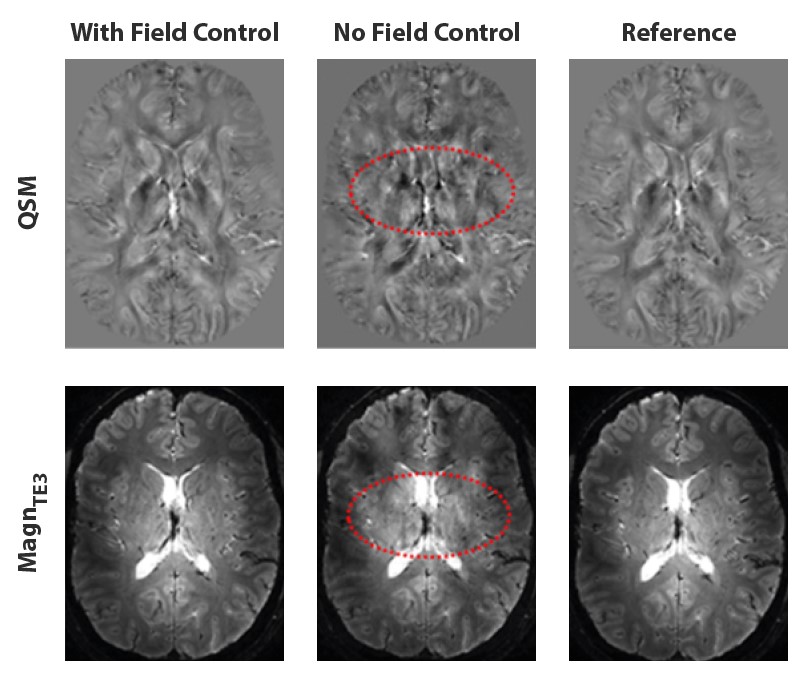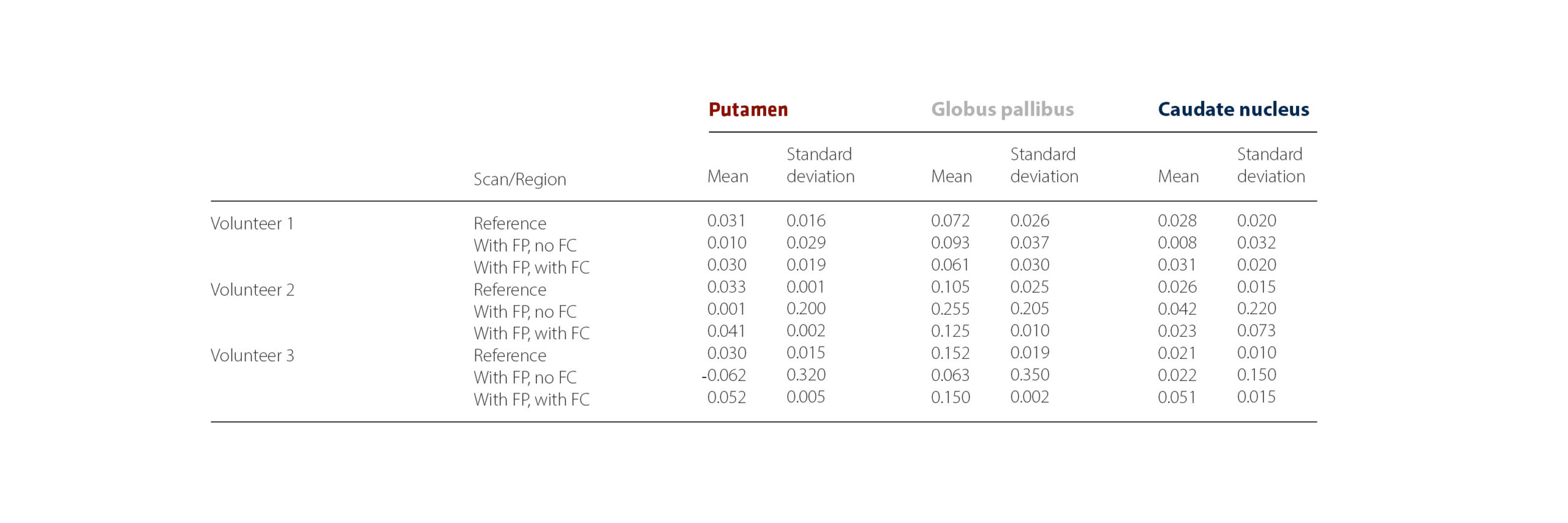Field Stabilization for Quantitative Susceptibility Mapping
Using real-time field control
Stabilization of the field was achieved through real-time field control which strongly improved the precision of quantitative susceptibility values.
Quantitative susceptibility mapping (QSM) relies on the phase component of gradient echo (GE) images for a voxel-wise estimation of the magnetic susceptibility of tissue. The acquisition of these images is typically performed by gradient echo (GRE) sequences at long echo times and high field. However, these sequences are very sensitive to magnetic field perturbations caused by hardware imperfections such as eddy currents, temperature drifts and cardiac motion. Those disturbances can lead to an overall decrease in image quality, distortions of pixel-intensity values, which in turn affect the applicability and reliability of these techniques as quantitative methods at high field. To eliminate these challenges, the Clip-on Camera™ was employed to stabilize the field via a real-time updating of the shims and thus recover the quality of gradient-echo-based QSMs despite the field perturbations.


Results
Performing field control with the use of the Clip-on Camera successfully removed phase errors in the phantom images that were caused by time-varying field perturbations. In volunteers, field control significantly curbed the effects of field perturbations. As a result of the continuous monitoring of field deviations, the real-time update of the shim system reduced the deviations from the control experiment from 93 ± 53% to 31 ± 46% across all of the regions investigated.
Conclusion
Without field control, controlled field perturbations distinctly exposed issues with GRE imaging at high field both in phantom and in vivo and thus weakening the claim that susceptibility maps are reliably quantitative. With the application of the Clip-on Camera, significant field stabilization was achieved and image quality together with quantitative susceptibility values were restored to the reference values that were acquired under minimum perturbations.
